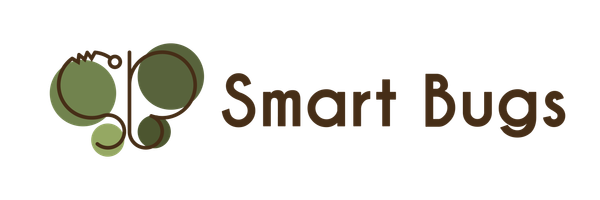BUTTERFLY BLOOM - Un'oasi per le farfalle
BUTTERFLY BLOOM
An oasis for butterflies

Welcome to the "green thumb" area of Smart Bugs! 🌱🌸
If you are here it is because you have started the experience with one of our Kits and now you are working to create your own little oasis to host and attract butterflies and other wild pollinators. We want to tell you that we are proud of what you are doing and we thank you for the help you are giving us: creating new habitats to host these wonderful insects and other pollinators is a fundamental action that contributes to the defense of the biodiversity of our territories.


In each sachet, made using biodegradable materials without the use of substances harmful to the environment, you will find a mix of seeds of native wild plants that, once in flower, will transform terraces and gardens into oases to attract and host butterflies. This activity has an extremely important implication since butterfly populations are decreasing by 40% at European level due to the degradation of their habitats. Creating new green spots is therefore a simple action that can mitigate this problem. Even the smallest contribution can make a difference, especially in cities where green spaces are scarce.
Many butterfly species, unlike bees (which pollinate plants within a maximum radius of 3 km from their hive), are migratory insects or insects with a high dispersive potential that, by covering greater distances, pollinate plants even very far from each other, thus promoting biodiversity.
Inside the sachet you will mainly find seeds of Anthemis arvensis L., Centaurea cyanus L., Papaver rhoeas L. but there are also seeds of Achillea millefolium L., Campanula trachelium L., Centaurea jacea L., Centaurium erythraea Rafn, Galium verum L., Hypericum perforatum L., Leucanthemum vulgare Lam., Linaria vulgaris Mill., Silene flos-cuculi (L.) Clairv., Silene latifolia Poir.
Now that you know how important what you are about to do is...

After a few days we noticed that here in Smart Bugs there are many snails and slugs, animals that could go to feed and eat our sprouts. For this reason we decided to cover the box with a protective net to prevent these animals from entering. The net is the same one used for sifting and we blocked it with string, here is the result:

This is the situation after 5 days from sowing, here are the first shoots 🌱

These are our sprouts after 23 days from sowing 😍

Our seedlings are growing and doing well, here below is the situation 34 days after sowing 🌱
We have noticed that as time goes by, different species of seedlings are growing. This is because different species of seeds have different germination and growth times.
Water should be given once every 1/2 days in abundance (in the morning or in the evening); you can adjust the quantity based on the humidity of the soil.

When the plants reach the level of the net it is time to remove the protection, this will allow them to grow without obstacles.
60 days after sowing the first species have started to flower and the pollinators have started to arrive 🦋 Here is a Macaone butterfly on our Oasis 🌸🌼

We have noticed that aphids (small parasites) have appeared on the plants, as you can see in the photo below. To combat them, we have released Ladybugs into the oasis, which, being aphid eaters, will reduce the presence of this pest insect.
If you are having the same problem you can find the ladybugs at this link.

With the flowering and the availability of nectar, new pollinators come to visit us every day... what can I say, it's not just an Oasis for butterflies 😍

Compared to the original position, where the Oasis was exposed to the sun for most of the day, after about 100 days (in our case in August) we moved it to a more sheltered spot. By doing so, the plants are less exposed and consequently their water needs have decreased. Now it is enough to give them water once every 2/3 days or so. The new position of the Oasis is near a hedge.
As time goes by you will see that new species of flowers will populate your Oasis, so we recommend that you keep an eye on it, it will also be an excellent opportunity to admire the insects that will use it as a refreshment 🦋🐞🐝
PS: we are curious to see your Oasis, send us photos of your plants in various stages via email, here is the address: info@smart-bugs.com 😉

